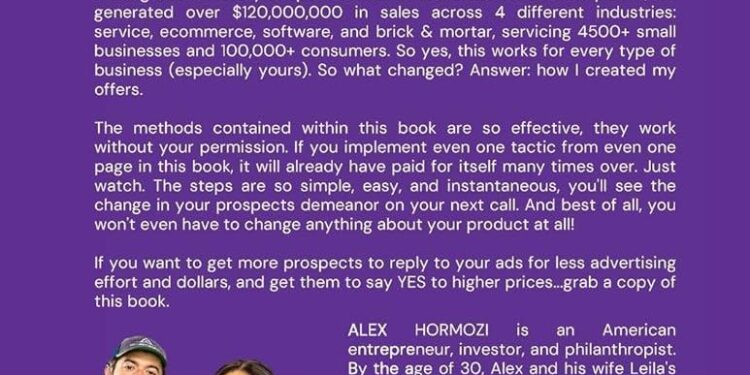In a stark warning to investors and policymakers alike, a prominent figure behind the success of “The Big Short” cautions that despite the economy’s current resilience against what he describes as “thoughtless” and “unprecedented” tariff measures, the specter of stagflation looms on the horizon. Speaking amid ongoing trade tensions and global economic uncertainty, the investor underscores that while growth has held firm for now, underlying pressures could soon derail progress, signaling a challenging period ahead for markets and consumers.
The Big Short Investor Signals Warning as Economy Resists Initial Tariff Impact
Despite the economy showing unexpected resilience amid recent tariff impositions, a prominent investor famously featured in The Big Short is sounding alarms about the long-term consequences. The tariffs, described by the investor as both “thoughtless” and “unprecedented,” have yet to produce the sharp downturn many anticipated. However, underlying pressures are mounting, and experts warn that the initial economic shield may soon falter. Rising costs coupled with disrupted supply chains set the stage for what could evolve into a harsh period of stagflation-where inflation surges as growth stagnates.
Key indicators highlight growing stress in sectors likely to be most affected over the coming quarters:
- Manufacturing output: Steady but slowing growth rate amid increasing import costs
- Consumer prices: Climbing steadily, pushing household expenses upward
- Corporate earnings: Margins shrinking due to tariff-induced supply chain inefficiencies
| Economic Indicator | Current Trend | Potential Impact |
|---|---|---|
| Inflation Rate | Rising | Reduced purchasing power |
| Job Growth | Moderate | Slowing hiring rates |
| Supply Chain | Disrupted | Increased costs, delays |
Analyzing the Risks of Unprecedented Trade Policies on Inflation and Growth
Unprecedented tariffs imposed in recent trade policies have sparked intense debate among economists and investors alike. While the broader economy has demonstrated surprising resilience against such “thoughtless” measures, cracks are beginning to show beneath the surface. Supply chain disruptions, rising production costs, and retaliatory trade barriers threaten to retard growth and exacerbate inflationary pressures. Experts warn that these factors could culminate in a sustained period of stagflation, where inflation accelerates while economic output stagnates or declines.
Key risks associated with these tariffs include:
- Supply Chain Volatility: Increased tariffs push up costs for manufacturers reliant on imported components.
- Consumer Price Increases: Elevated input costs are often passed down to consumers, impacting purchasing power.
- Global Retaliation: Trade partners may impose countermeasures, further complicating export markets.
- Investment Uncertainty: Long-term corporate planning may stall due to unpredictability in trade policies.
| Factor | Potential Impact | Timeframe |
|---|---|---|
| Tariff Expansion | Cost Increase of 15%-20% | 6-12 months |
| Supply Chain Disruption | Delays & Shortages | 3-9 months |
| Retaliatory Measures | Export Decline of 10% | 9-18 months |
Strategic Financial Moves to Prepare for Potential Stagflation Ahead
Investors and consumers alike should brace for an economic environment where inflation persists alongside stagnating growth, a scenario that demands careful recalibration of financial strategies. To safeguard wealth, experts recommend prioritizing assets that traditionally perform well during stagflation. Real estate, commodities, and Treasury Inflation-Protected Securities (TIPS) offer valuable hedges against the erosion of purchasing power. Additionally, cutting exposure to long-term fixed-income instruments can mitigate risks associated with rising interest rates driven by persistent inflation.
On a practical level, diversified portfolios must emphasize resilience and liquidity. Consider the following strategic moves:
- Shift towards sectors with pricing power, such as consumer staples and energy, which can better endure higher input costs.
- Maintain a cash reserve to exploit market dislocations and avoid forced sales in downturns.
- Review debt obligations to payoff or restructure variable-rate loans before interest rates climb further.
| Asset Class | Stagflation Outlook | Recommended Action | ||||||||||
|---|---|---|---|---|---|---|---|---|---|---|---|---|
| Real Estate | Positive hedge | Increase allocation | ||||||||||
| Treasury Bonds | Negative impact | Reduce holdings | ||||||||||
It looks like your table is incomplete. Here’s a suggested completion for the last row and a full table with consistent styling based on your existing content:
If you’d like, I can help you expand the table further or refine the styling! In RetrospectAs the global economy braces for what some experts predict to be a period of stagflation, warnings from savvy investors like those behind “The Big Short” serve as a crucial reminder that current resilience may be temporary. While strongholds against recent tariffs have so far mitigated immediate shocks, the prospect of prolonged inflation paired with stagnant growth poses significant challenges ahead. Policymakers and markets alike will need to stay vigilant as the unfolding economic landscape tests the durability of these early gains. |































